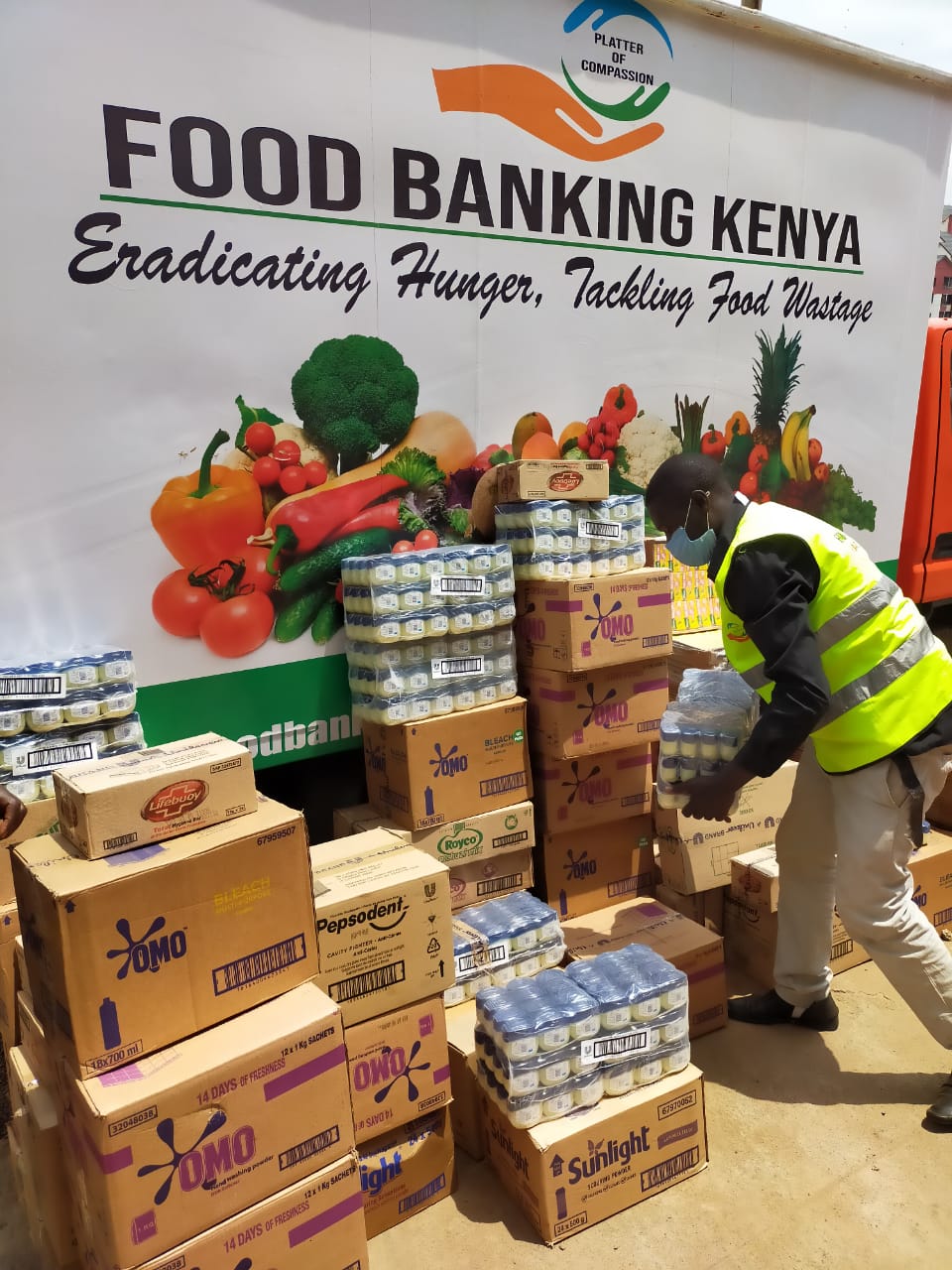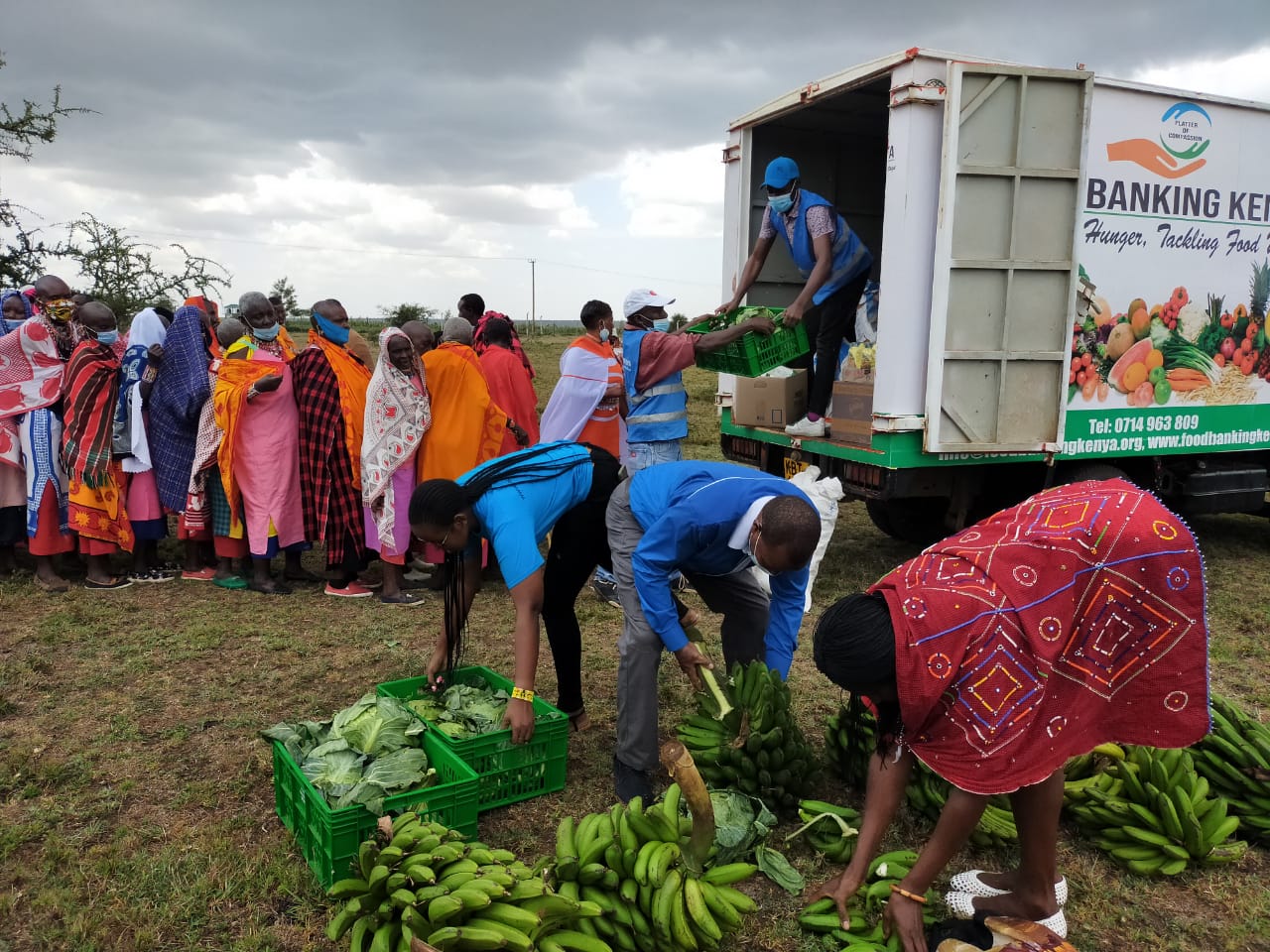Food banks across Africa expanded exponentially during 2020 to support increased need in their communities during the COVID-19 crisis. Last year, African food banks in The Global FoodBanking Network (GFN) increased people served by 169 percent increase over 2019 and distributed 8 million kilograms of food, an 80 percent increase.
COVID-19 first appeared in Africa in February 2020, and shortly after, protective public health measures like curfews, quarantines, and school and business closures were put in place across the continent to slow the virus spread. Many of these necessary measures negatively impacted the economy, and demand for emergency food aid doubled as a result. For many in Africa, the fear of hunger was greater than the fear of COVID-19.
GFN supported these food bank partners early on by providing emergency grants, which provided unrestricted funding to cover the costs of food, personal protective equipment, a refrigerated truck to move fresh produce, and new warehouse and kitchen spaces.

In addition to financial assistance, GFN staff provided technical assistance in the form of knowledge sharing, best practices, and planning preparedness as part of an emphasis on accelerating the growth and development of food banking in Africa that began in 2019.
“With the assistance of GFN we have been able to go miles ahead of achieving what we thought we would achieve as a food bank,” said John Gathungu, executive director and co-founder of Food Banking Kenya. “In the next five years, I see Food Banking Kenya expanding and even opening up in various [other] areas of our country.”
Food Banking Kenya is a strong example of the ingenuity that recently established African food banks demonstrated in the face of the pandemic. In 2020, food bank leadership overcame a wide array of challenges to serve 174,000 people, a significant increase from 26,000 people served in 2019. As panic buying and other issues along the supply chain began to rise due to the pandemic, Food Banking Kenya saw food donations disappear and had to rethink their model. The food bank expanded their agricultural recovery program, which pays farmers a discounted rate for safe and fresh but unsellable produce that would otherwise go to waste. Because of this pivot, agricultural recovery now makes up 55 percent of food distributed by the food bank.

Through the expanded agricultural program, Food Banking Kenya put a focus on ensuring school children were accessing fresh produce and other foods. In 2020, the food bank reported that 75 percent of their clients were children, which was done through a school feeding program implemented once schools opened again. Through six schools, Food Banking Kenya feeds 1,900 children daily and is the only organization in Kenya providing fresh fruits and vegetables to educational institutions. Another 2,695 youth are fed through partnerships with 34 children’s homes. Food Banking Kenya further responded to the increase in demand in its communities by expanding to other new agencies and nontraditional partners like rehabilitation centers as well as organizing groups in informal settlements to meet the intense need in those communities.
“In 2020, I was most proud of the way our team at Food Banking Kenya responded to the COVID-19 crisis, sacrificing so much to respond to the constantly escalating need in our community,” said Susan Mukuhi, chairperson of Food Banking Kenya.
To learn more about the work GFN food banks carried out in 2020, read the summary of what we learned from the latest annual survey of our Network.